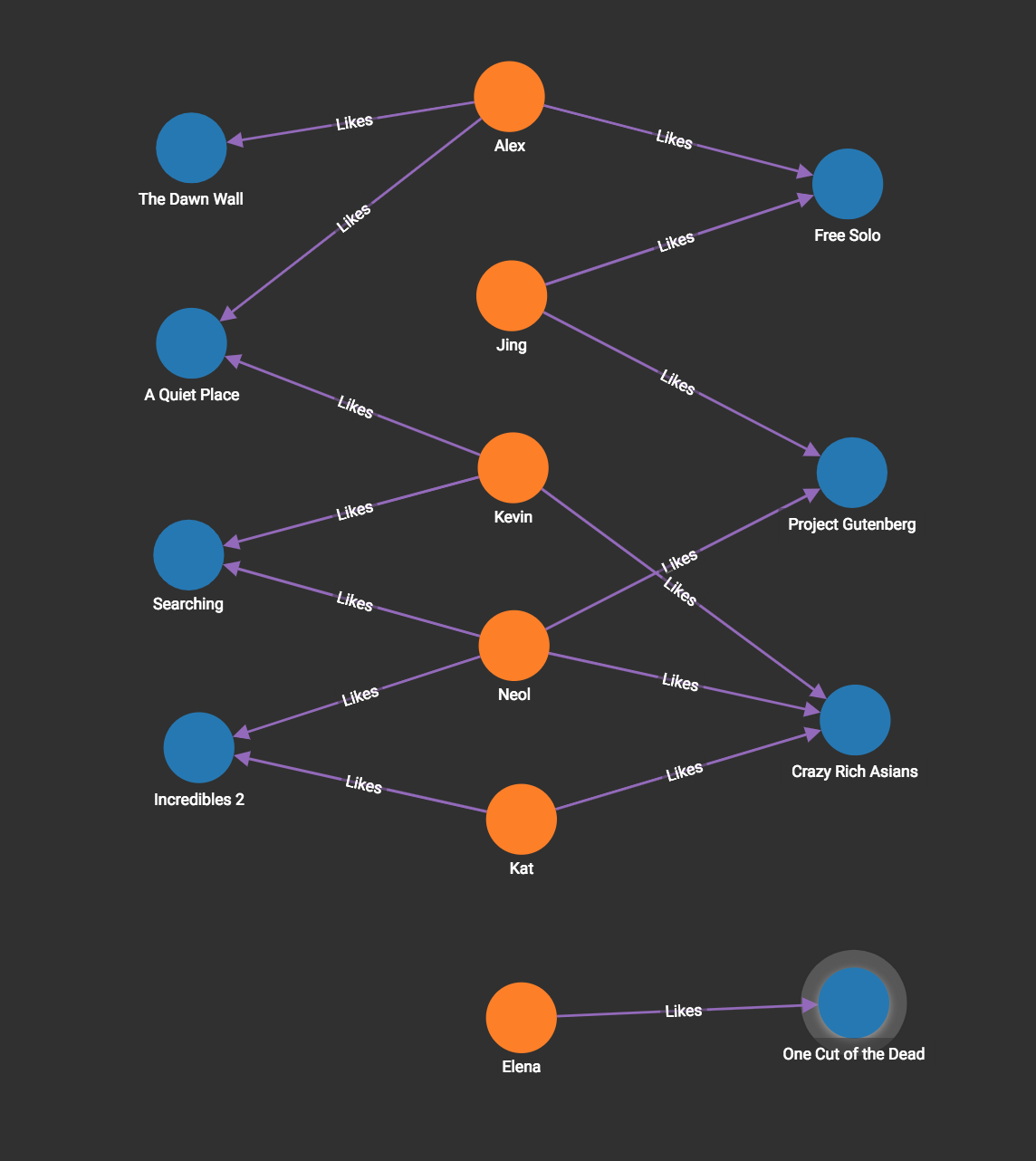Cosine Similarity of Neighborhoods (Single-Source)
To compare two vertices by cosine similarity, the selected properties of each vertex are first represented as a vector. For example, a property vector for a Person vertex could have the elements age, height, and weight. Then the cosine function is applied to the two vectors.
The cosine similarity of two vectors A and B is defined as follows:
If A and B are identical, then cos(A, B) = 1. As expected for a cosine function, the value can also be negative or zero. In fact, cosine similarity is closely related to the Pearson correlation coefficient.
For this library function, the feature vector is the set of edge weights between the two vertices and their neighbors.
In the movie graph shown in the figure below, there are Person vertices and Movie vertices. Every person may give a rating to some of the movies. The rating score is stored on the Likes edge using the weight attribute. For example, in the graph below, Alex gives a rating of 10 to the movie "Free Solo".

Specifications
tg_cosine_nbor_ss (VERTEX source, SET<STRING> e_type, SET<STRING> re_type,
STRING weight, INT top_k, INT output_limit, BOOL print_accum = TRUE,
STRING file_path = "", STRING similarity_edge = "")
RETURNS (MapAccum<VERTEX, FLOAT>)| Characteristic | Value |
|---|---|
Result |
The top K vertices in the graph that have the highest similarity scores, along with their scores. The result is available in three forms:
|
Input Parameters |
|
Result Size |
|
Time Complexity |
O(D^2), D = outdegree of vertex v |
Graph Types |
Undirected or directed edges, weighted edges |
The output size is always K (if K ⇐ N), so the algorithm may arbitrarily choose to output one vertex over another if there are tied similarity scores.
Example
Given one person’s name, this algorithm calculates the cosine similarity between this person and each other person where there is at one movie they have both rated.
In the previous example, if the source vertex is Alex, and top_k is set to 5, then we calculate the cosine similarity between him and two other persons, Jing and Kevin. The JSON output shows the top 5 similar vertices and their similarity score in descending order. The output limit is 5 persons, but we have only 2 qualified persons:
[
{
"@@result_topk": [
{
"vertex1": "Alex",
"vertex2": "Jing",
"score": 0.42173
},
{
"vertex1": "Alex",
"vertex2": "Kevin",
"score": 0.14248
}
]
}
]The FILE version output is not necessarily in descending order. It looks like the following:
Vertex1,Vertex2,Similarity
Alex,Kevin,0.142484
Alex,Jing,0.421731The ATTR version inserts an edge into the graph with the similarity score as an edge attribute whenever the score is larger than zero. The result looks like this:
